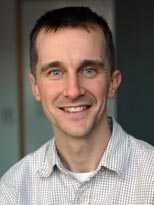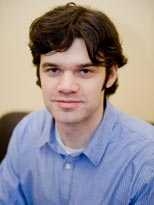Three scientists at MIT were today named Howard Hughes Medical Institute (HHMI) Early Career Scientists, part of a new initiative designed to give promising researchers more time and resources to focus on their boldest -- and potentially transformative -- research ideas.
The three appointed from MIT, among the 50 chosen overall, are Michael Laub, the Whitehead Career Development Assistant Professor of Biology; Peter Reddien, the Thomas D. and Virginia W. Cabot Assistant Professor of Biology and member of the Whitehead Institute for Biomedical Research; and Aviv Regev, an assistant professor in the Department of Biology.
Each HHMI Early Career Scientist will receive a six-year appointment to the HHMI and, along with it, the freedom to explore his or her best ideas without worrying about where to find the money to fund those experiments.
Laub's research focuses on how cells process information and control behavior, and he is analyzing the complete set of genes and proteins involved in cell cycle progression and other signaling pathways in Caulobacter, an aquatic bacterium widely distributed in fresh water lakes and streams. His goal is to determine how feedback loops and other design features link these signaling molecules in elaborate molecular circuits. He is also developing new methods for the rational rewiring of signaling pathways in bacteria.
Reddien's work is focused on remaking the freshwater planarian Schmidtea mediterranea into a state-of-the-art model organism -- one that, like the fruit fly or the mouse, will prove important for understanding fundamental aspects of biology.
Regev, who is also with the Broad Institute of MIT and Harvard, combines computational and experimental approaches to investigate how complex gene regulation networks rewire themselves in response to genetic and environmental changes. Her studies in yeast will address how these remarkably flexible networks transform over different time scales -- from rapid adaptations in response to changing nutrient availability to evolutionary changes in metabolism that have occurred over 300 million years.
HHMI will provide each Early Career Scientist with his or her full salary, benefits and a research budget of $1.5 million over the six-year appointment. The HHMI will also cover other expenses, including research space and the purchase of critical equipment.
"We saw a tremendous opportunity for HHMI to impact the research community by freeing promising scientists to pursue their best ideas during this early stage of their careers," said HHMI President Thomas R. Cech. "At the same time, we hope that our investment in these 50 faculty will free the resources of other agencies to support the work of other outstanding early career scientists."
The 41 men and nine women will begin their six-year, nonrenewable appointments to HHMI in September 2009, with an anticipated second Early Career Scientist competition in 2012.
A version of this article appeared in MIT Tech Talk on April 1, 2009 (download PDF).








